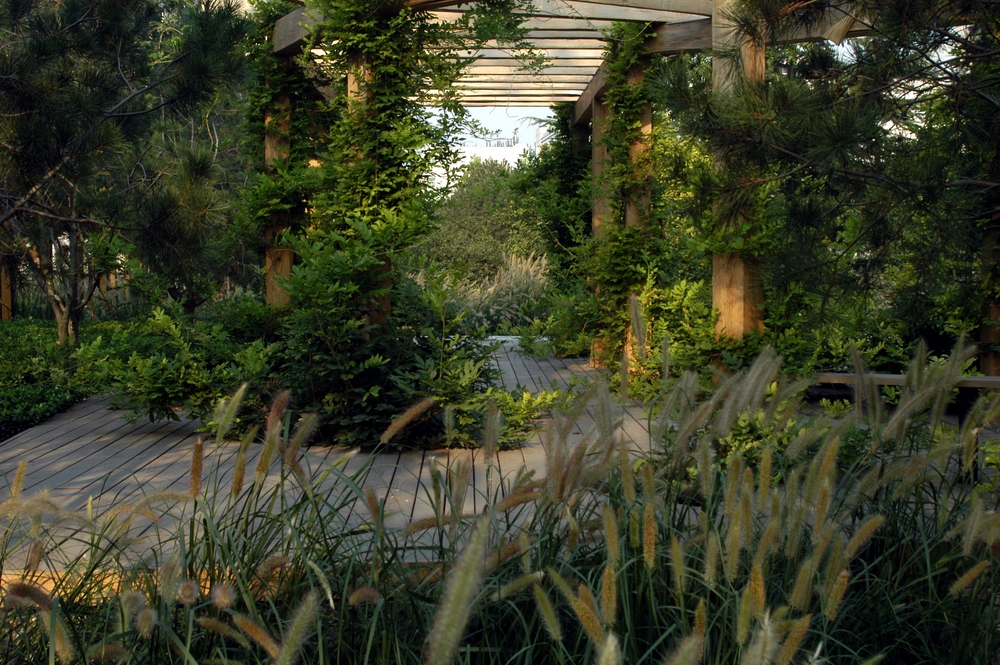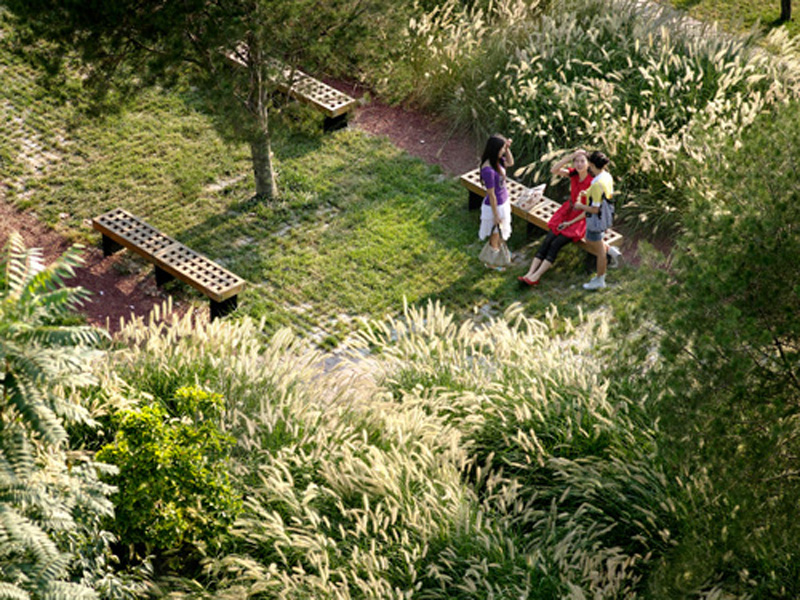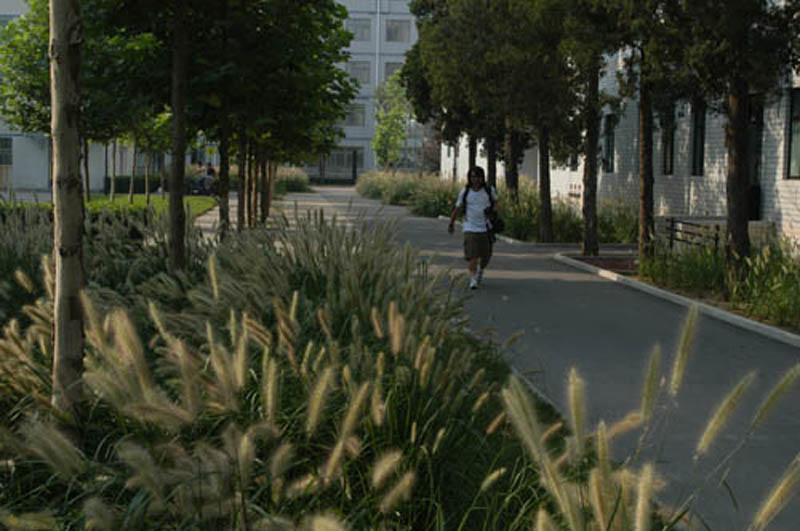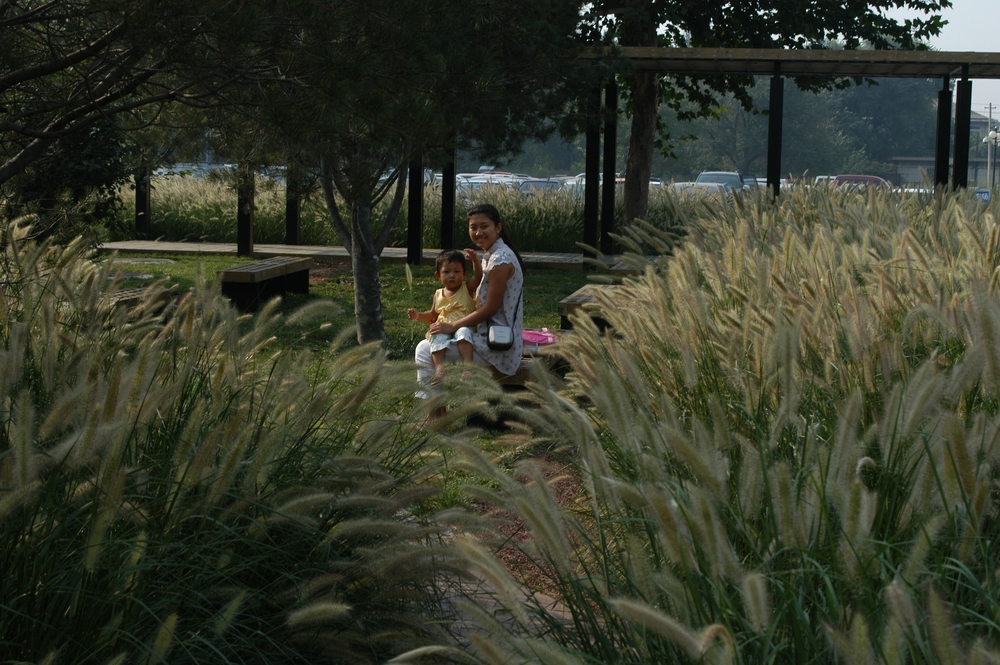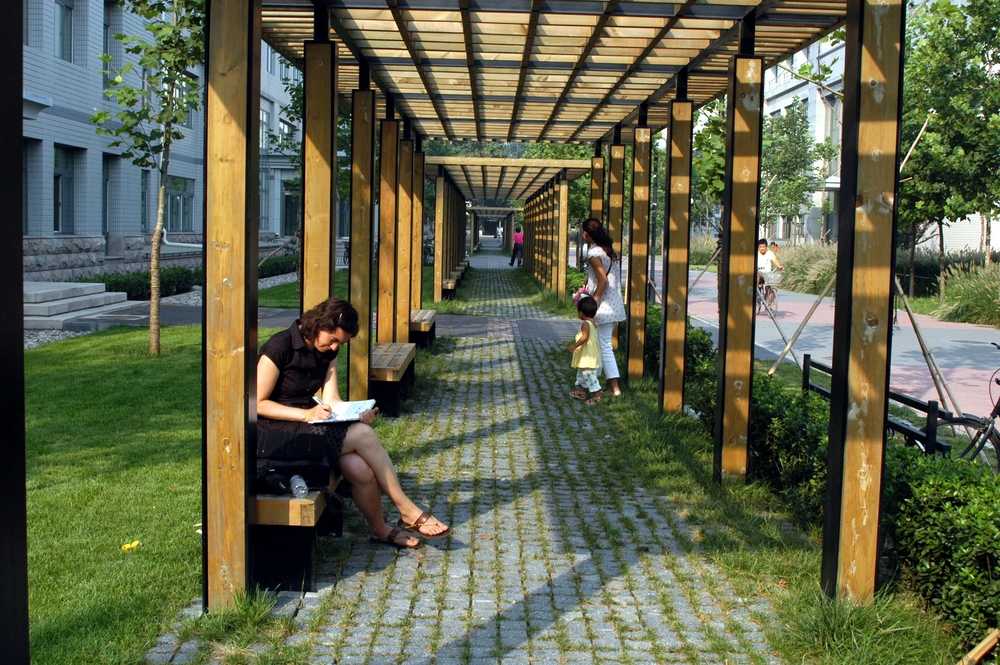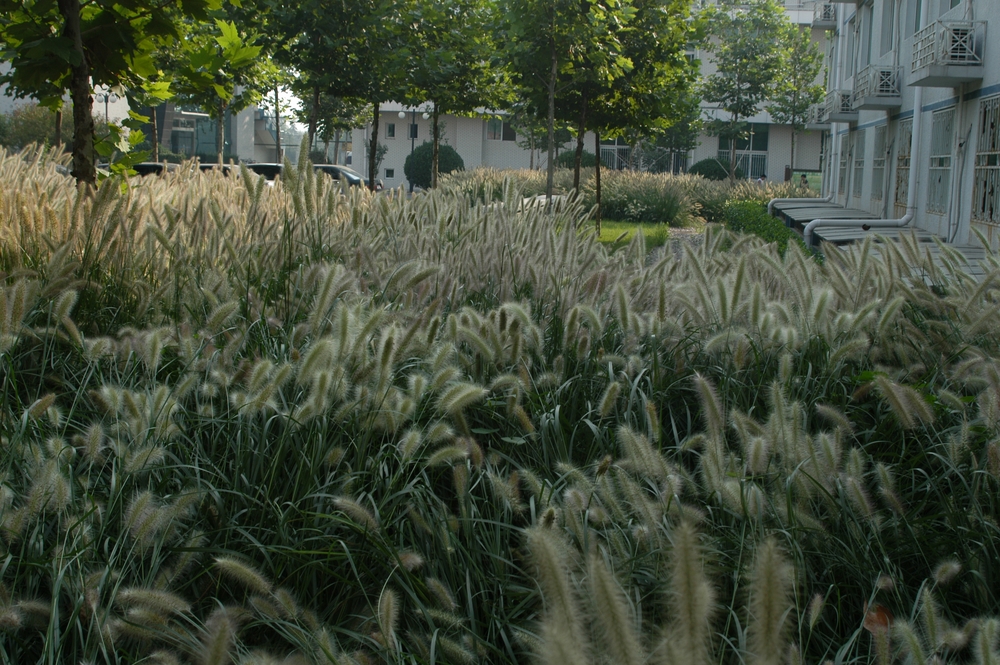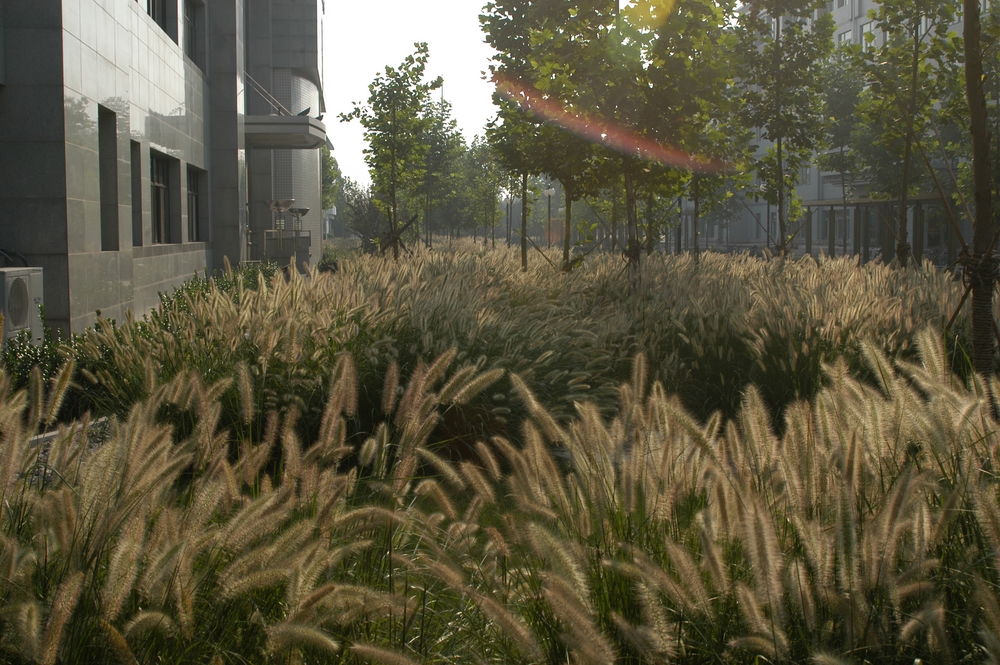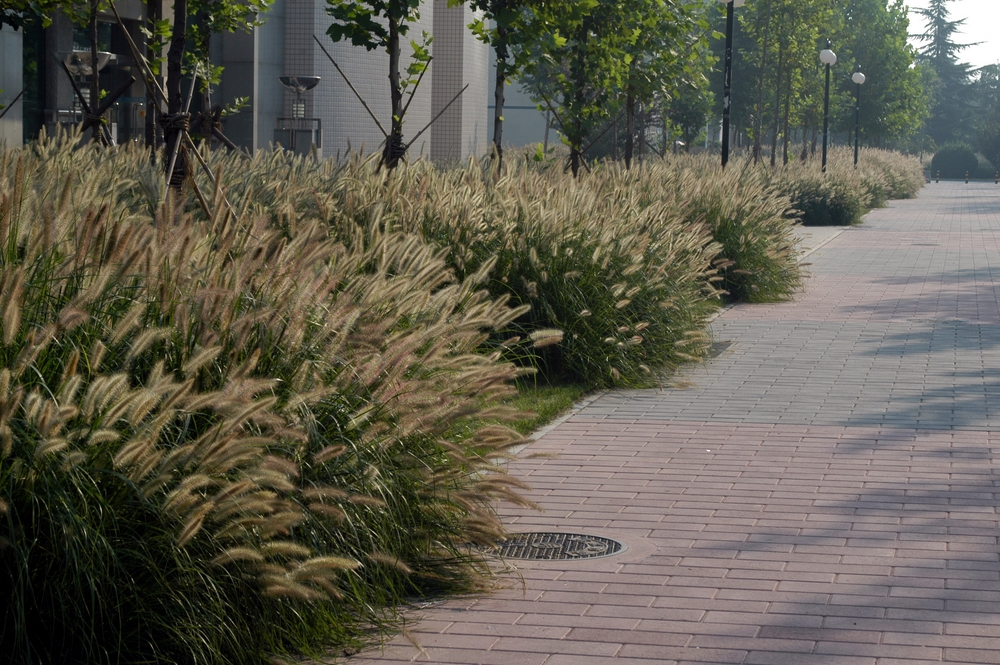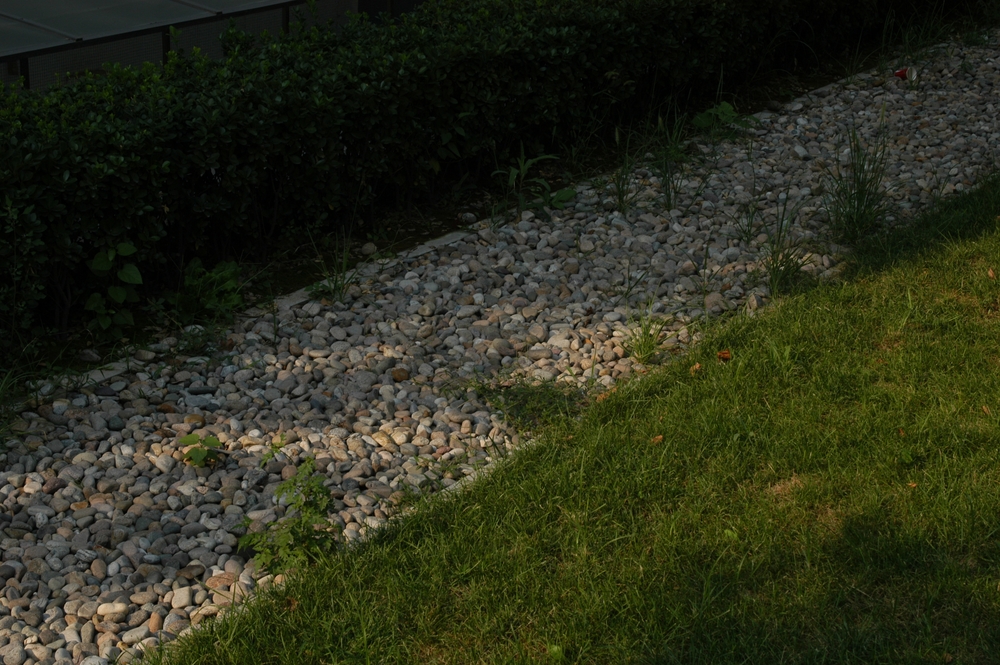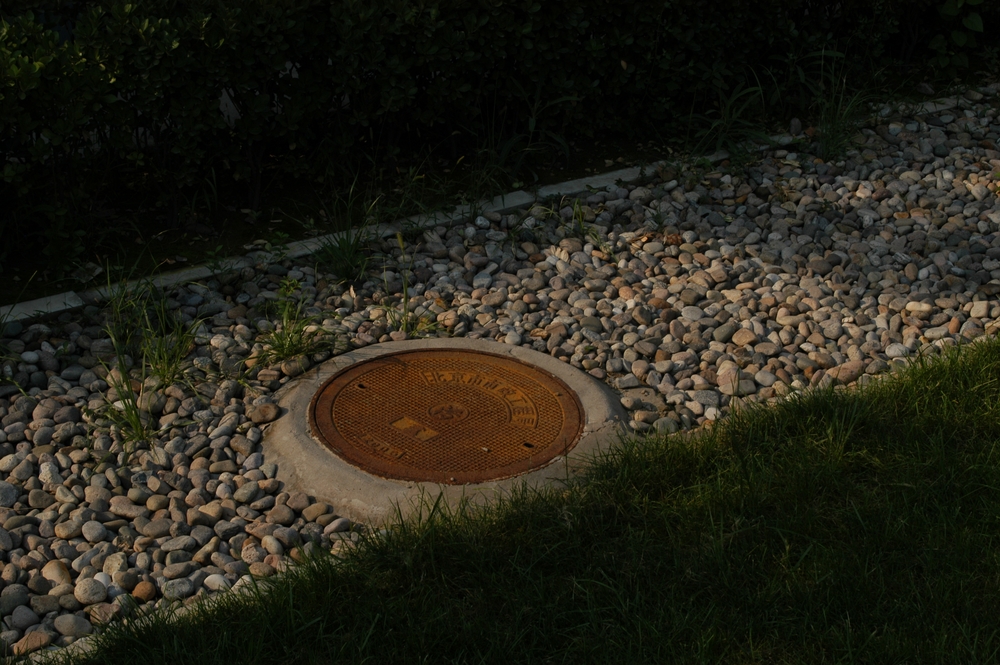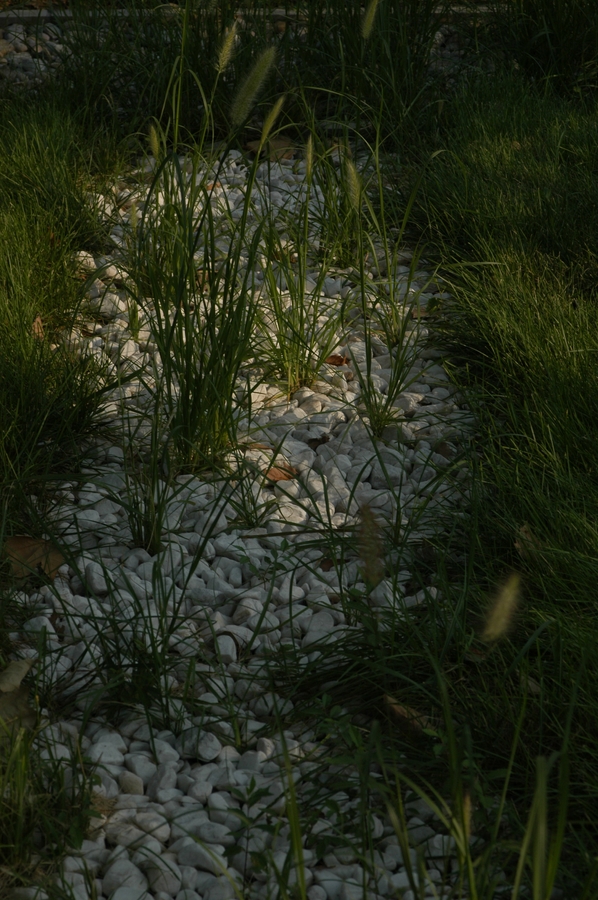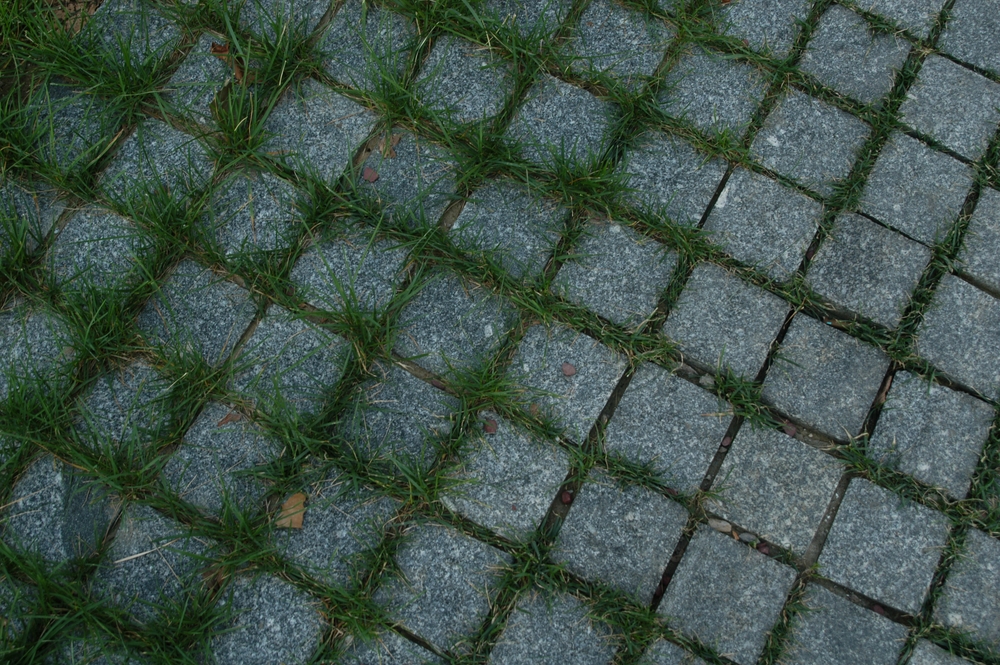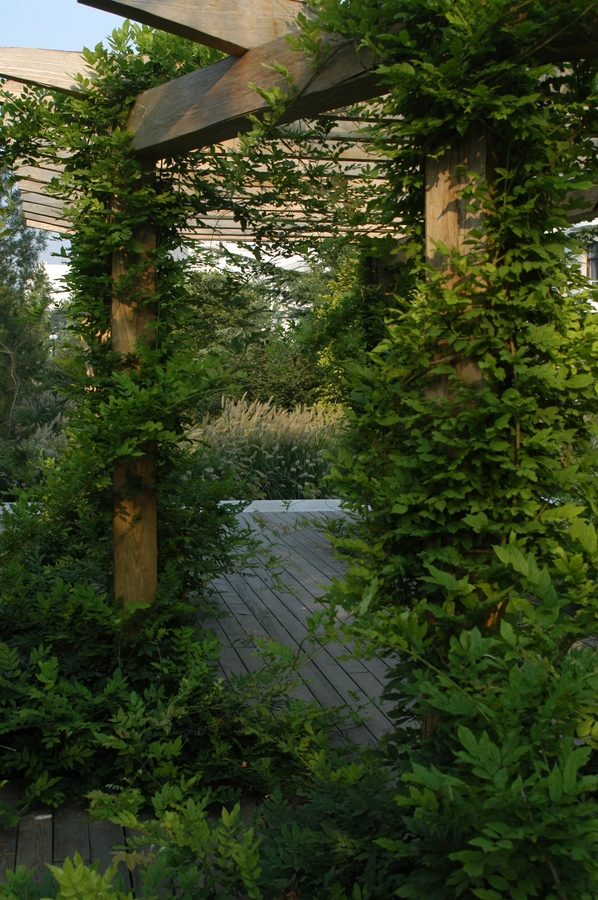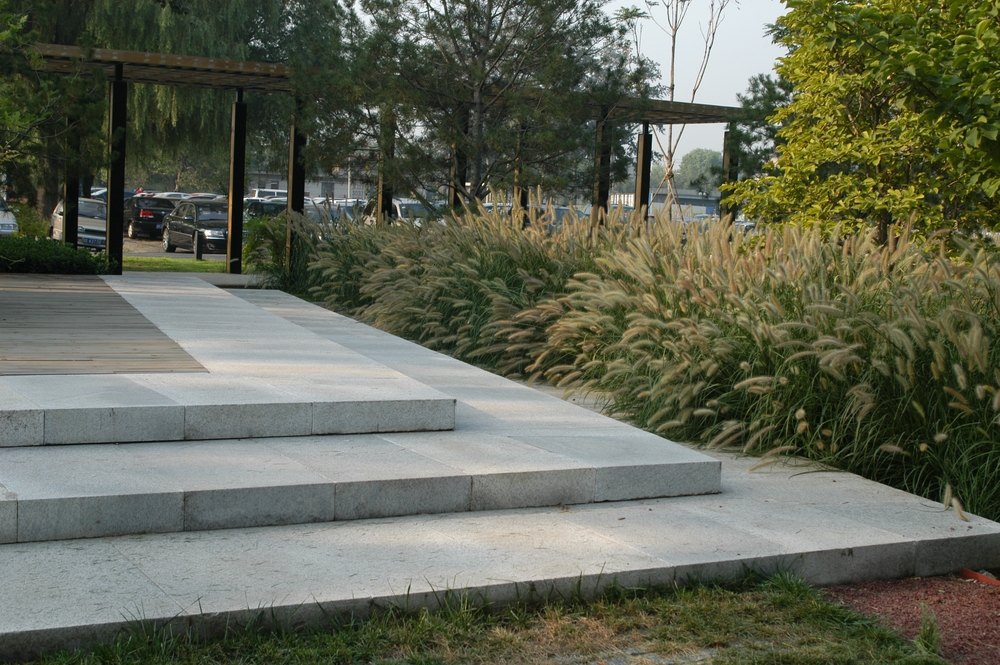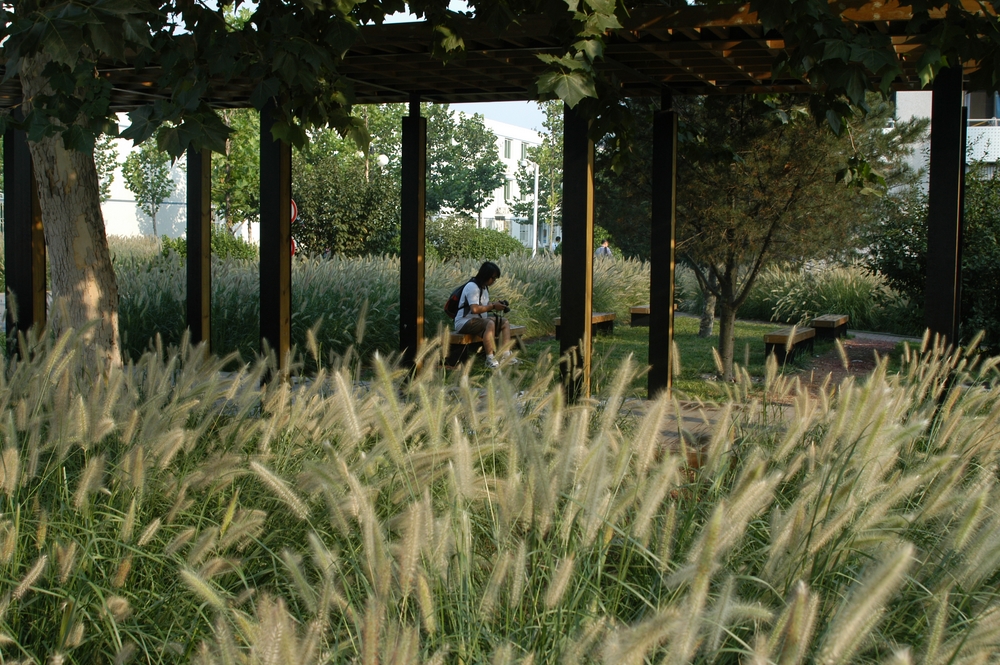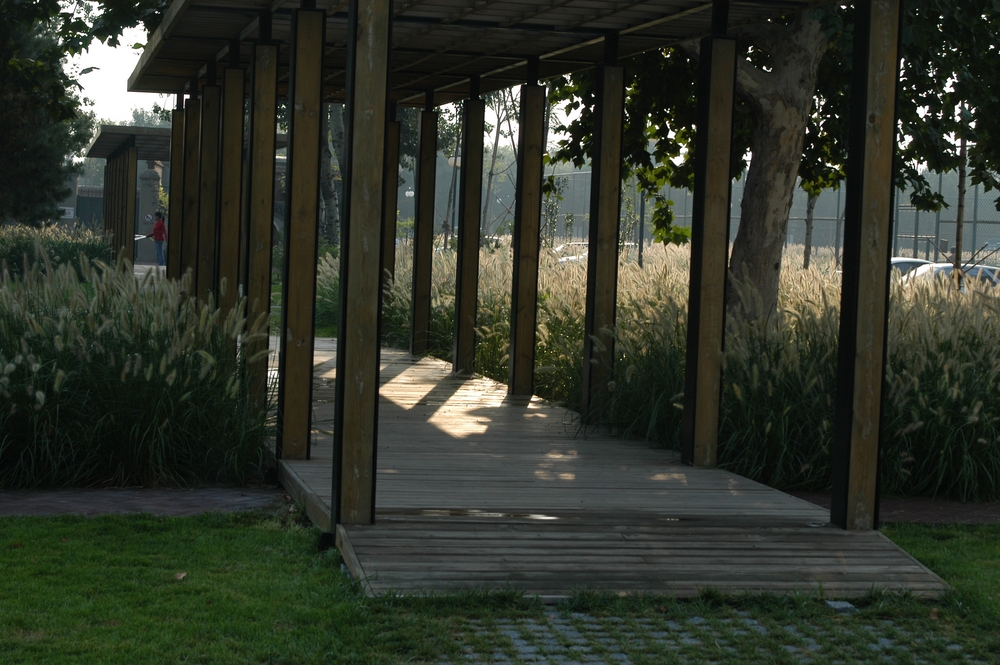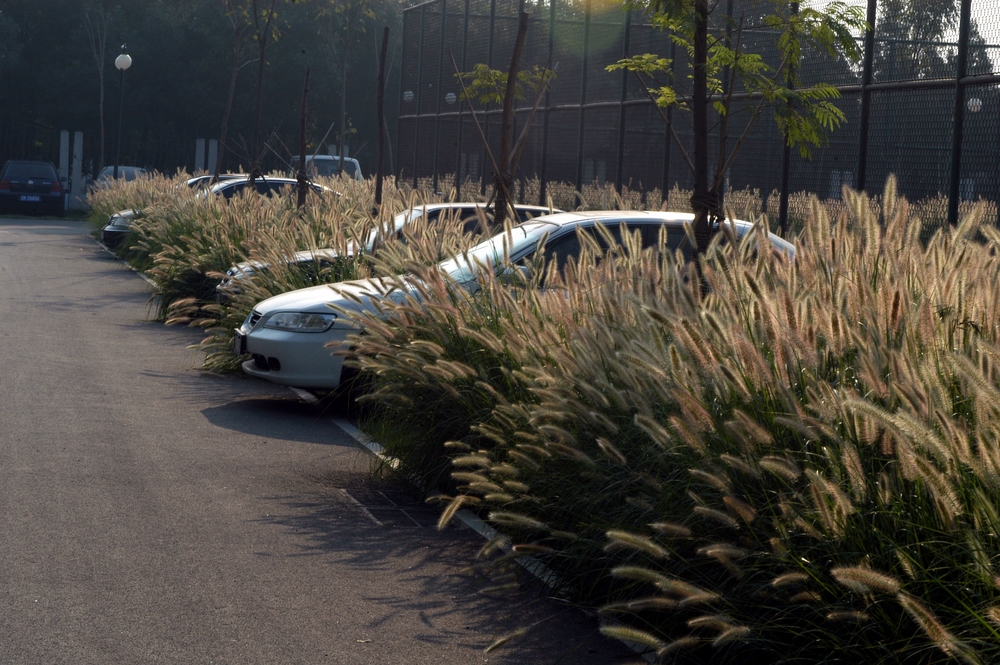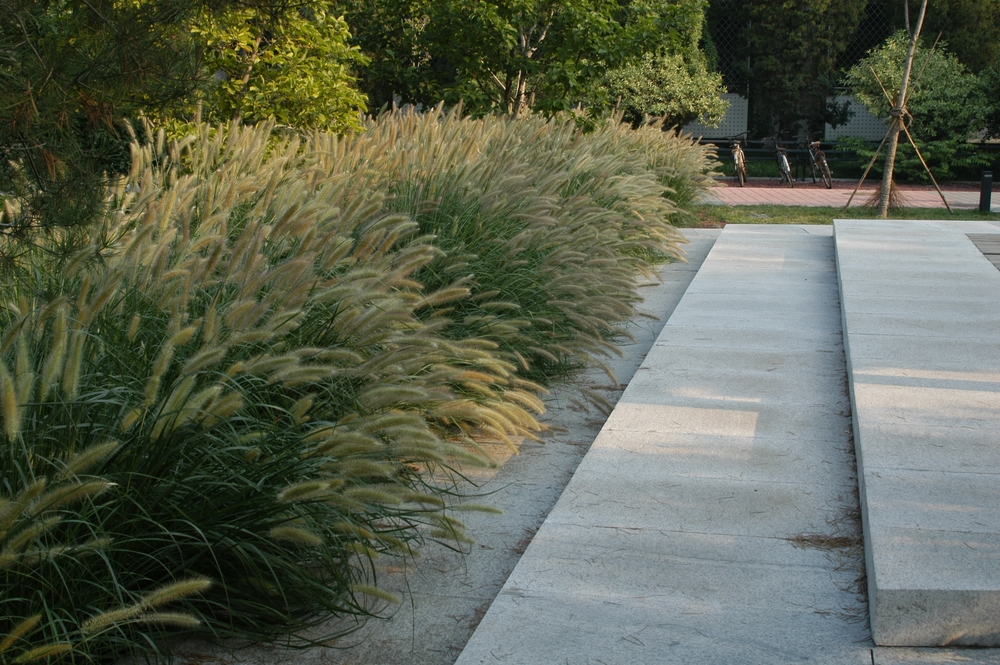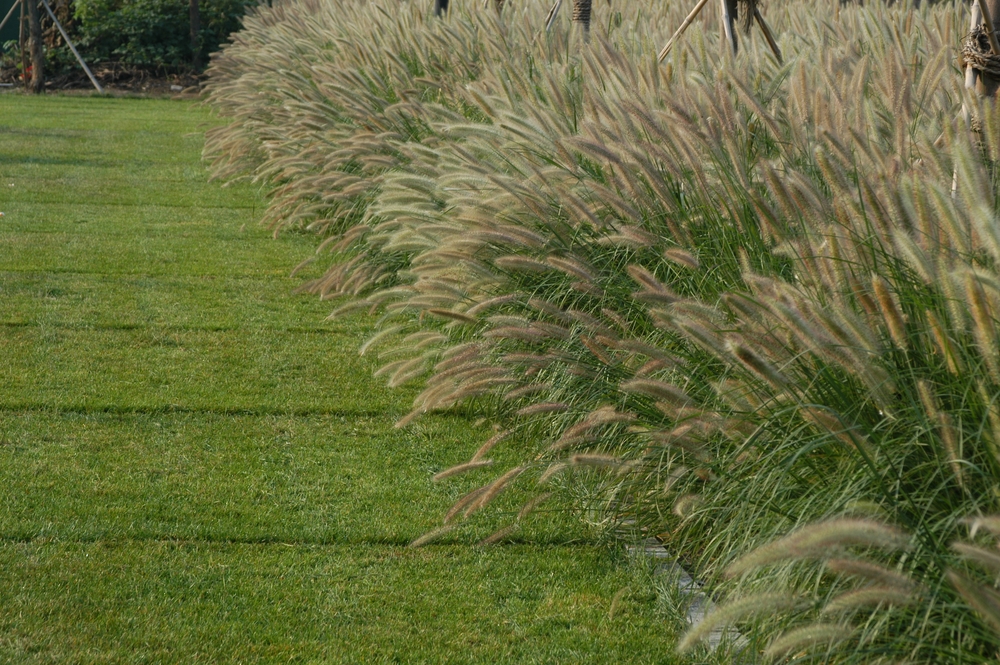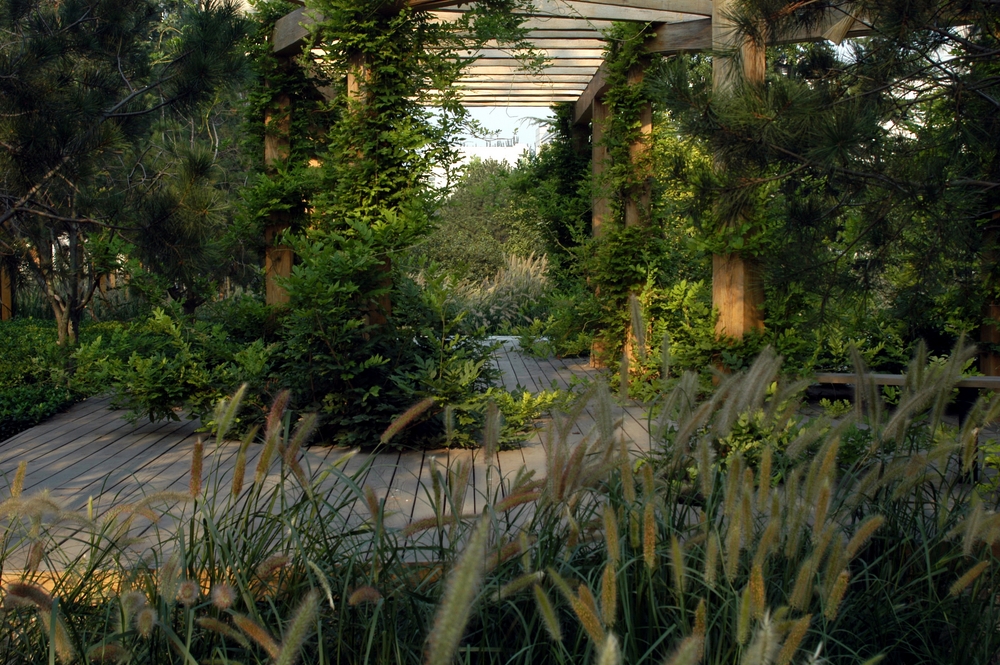University of International Relations Campus
Project Information
- Project Location:
- China Beijing
- Project Scale:
- 13.2 Hectares
- Design Time:
- 2005
- Build Time:
- 2006
- Client:
- University of International Realations
Project Profile
1. Project Statement
The landscape design of the University of International Relations campus is a renovation project focusing on transforming the old campus landscape. The goal is to build a sponge campus centered around rainwater management, utilizing rainwater on-site to nourish campus vegetation and improve the overall environment. The renovation, implemented in 2006, has enhanced the campus's cultural environment, traffic flow, activity spaces, and overall image. It is one of the earliest examples of applying sponge city theory on a micro scale in China.
Located in the scenic area of the western suburbs of Beijing, the university is adjacent to the Summer Palace to the west and overlooks the Old Summer Palace to the east. It is one of the national key universities directly under the Ministry of Education. The campus covers a total area of 132,000 square meters, with 30,000 square meters occupied by buildings.
With the campus expanding in phases over the years, the environment became increasingly crowded and cluttered, and the infrastructure lagged behind. Issues were evident in traffic organization, public spaces, architectural style, municipal facilities, and the overall campus image. At the end of 2005, the university commissioned Turenscape to redesign the campus landscape, aiming to address these issues and enhance the overall campus image.
The designers leveraged the strengths of landscape architecture in comprehensively addressing complex problems, coordinating the campus landscape's ecological, cultural, activity space, and visual effect needs. The core area's renovation was completed in 2006. The design's forward-looking and advanced approach to ecological rainwater management became the project's most prominent highlight.
2. Objective and Challenge
2.1 Complexity of Renovating an Old Campus
Renovating the campus landscape had to respect the existing site conditions while ensuring that students and staff could continue their normal activities during construction. This significantly limited the extent of the renovation, presenting major challenges for the rainwater management design. The main issues were:
The original layout of buildings, roads, and open green spaces could not be significantly altered, affecting the spatial continuity of the ecological infrastructure centered around rainwater facilities.
The campus had a low green space ratio, lacking large areas for rainwater collection, infiltration, and storage. Effective methods for achieving rainwater management goals through small-scale facilities needed to be found.
The scale of the existing municipal pipe network could not be changed, requiring coordination between ecological rainwater facilities and the existing municipal rainwater drainage system.
2.2 Limitations of Construction Funds and Timeline
The university required construction to be concentrated at the end of the semester and during the summer vacation, with a focus on cost-saving. Therefore, the campus landscape renovation needed to adopt a small-scale construction model. Facilities typically used for rainwater collection and storage, such as underground connected inspection wells and underground reservoirs, were not feasible due to time and budget constraints.
2.3 Impact of Northern Rainfall Characteristics on Landscape Creation
Due to the low and highly uneven rainfall distribution in Beijing, with 80% of the annual rainfall occurring during the rainy season (June to September), green spaces used for rainwater collection, infiltration, and storage frequently alternate between wet and dry conditions. Plant species that can adapt to this environment while achieving aesthetic effects are very limited.
3. Design Strategy
To address the above problems and challenges, the design proposed the following three strategies, aiming to implement the aspects of rainwater storage, retention, transmission, and infiltration through practical technical choices and design approaches.
3.1 Combining Points, Lines, and Surfaces to Form a Rainwater Management System
Previously, rainwater drainage on campus relied entirely on the municipal drainage network, with rainwater flowing through rain grates into the combined rainwater and sewage system. This often led to water accumulation in low-lying green spaces or roads during the rainy season. To systematically solve the campus rainwater management problem, a system was established through open channels, underground pipes, and vertical design, relying on green sponge facilities for rainwater collection, transmission, purification, and infiltration.
3.2 Selecting Key Technologies to Ensure Effective Rainwater Management
(i) Vertical Adjustment Between Green Spaces and Roads (Key Point: Flat Curbs Design)
The vertical adjustment of original green spaces, ensuring their elevation is 3-5 cm lower than the road surface, was critical. Flat curbs replaced traditional elevated curbs, allowing road rainwater to flow naturally into the green spaces, turning roads from barriers into connectors between green spaces.
(ii) Road Rainwater Purification and Collection (Key Point: Side Ditch Design)
Side ditches were designed to purify and collect initial rainwater runoff from roads, which contained pollutants like asphalt and gasoline. The side ditches, 60-100 cm wide, featured gravel layers at the bottom and coarse sand on top, allowing plants to grow and treating the initial rainwater before it reached the green spaces. The bottom of the side ditches had a slope of at least 0.5%, directing rainwater to other collection and storage systems.
(iii) Combining Water Collection Ponds with Traditional Green Space Functions (Key Point: Depressed Green Space Design)
Water collection ponds were designed in low-lying green areas, using techniques similar to side ditches with gravel and coarse sand layers. To address the uneven rainfall distribution and avoid frequent wet-dry alternation detrimental to plant growth, subsurface flow water collection was employed, supporting both the water collection pond's function and vegetation growth.
(iv) Rainwater Collection Facilities in Front of Buildings (Key Point: Pebble Belt Design)
Pebble belts were placed in the green spaces in front of buildings, creating a distinctive landscape style for the University of International Relations. Rainwater from building roofs was collected in these pebble belts, initially detained and purified before entering vertical pebble belts along the walls. These belts, 100 cm wide and 100-140 cm deep, were spaced 3-6 meters apart and planted with native Pennisetum grass, known for its drought and water resistance. The pebble belts not only collected rainwater but also received purified road rainwater, providing secondary purification and storage. Overflow pipes were installed in low-lying areas, directing rainwater to the municipal drainage system during heavy rains.
(v) Increasing Permeable Surfaces to Encourage Groundwater Recharge (Key Point: Permeable Pavement Design)
Existing roads and paved areas, made of impervious materials like asphalt concrete, cement bricks, and stone, were replaced with permeable asphalt, permeable sintered bricks for walkways, and grass pavers or loose gravel for parking lots and activity areas. This increased rainwater infiltration and groundwater recharge, improving soil moisture in the local environment. The abundantly growing Pennisetum grass further enhanced the campus's green image.
3.3 Coupling Rainwater Management Facilities with Existing Municipal Infrastructure
The existing municipal rainwater pipe network remained a part of the campus's rainwater collection and drainage system, working with ecological rainwater management facilities to ensure flood safety, storage, purification, infiltration, and reuse. Ecological water collection areas in green spaces included overflow outlets to direct excess rainwater to the municipal system during heavy rains, ensuring campus flood safety.
4. Conclusion
The University of International Relations campus landscape is a typical case of constructing an urban green sponge on a micro scale. The project, nearly ten years old, offers valuable insights for similar projects in design, implementation, and monitoring.
a. For already developed campuses, residential areas, and industrial zones, upgrading urban rainwater management facilities within short cycles and with minimal construction can shift traditional rainwater management modes. This transforms the original gray municipal pipe-dominated system into an ecological green infrastructure-dominated, municipal pipe-supported system.
b. Landscape design techniques and methods comprehensively address urban problems, integrating rainwater management, landscape creation, ecological restoration, communication spaces, and campus characteristics.
c. Adapting to the low and uneven rainfall distribution in northern regions, flexible rainwater facilities were designed and constructed, using appropriate techniques, ecological materials, and vegetation to regulate, store, and drain rainwater, ensuring flood safety and meeting green space water needs during dry seasons.
